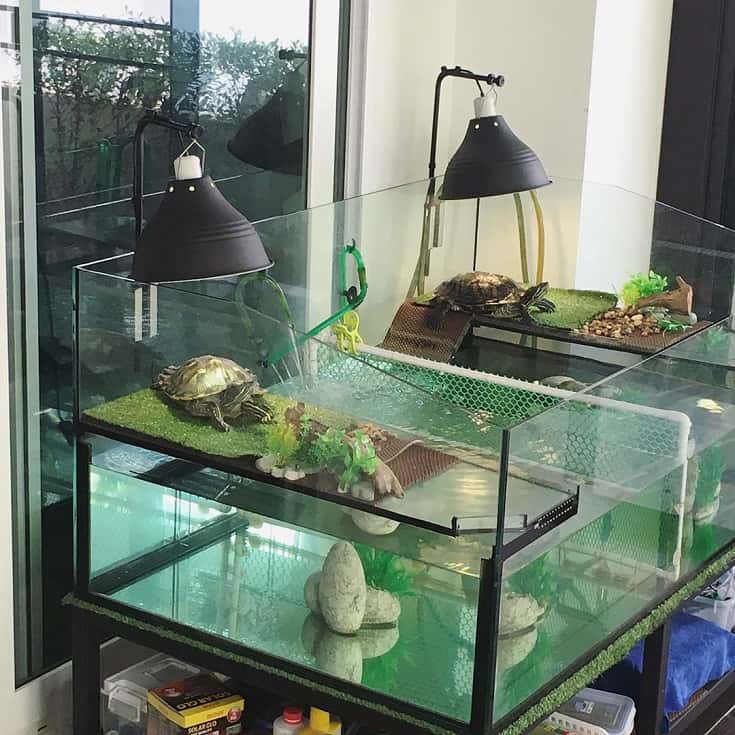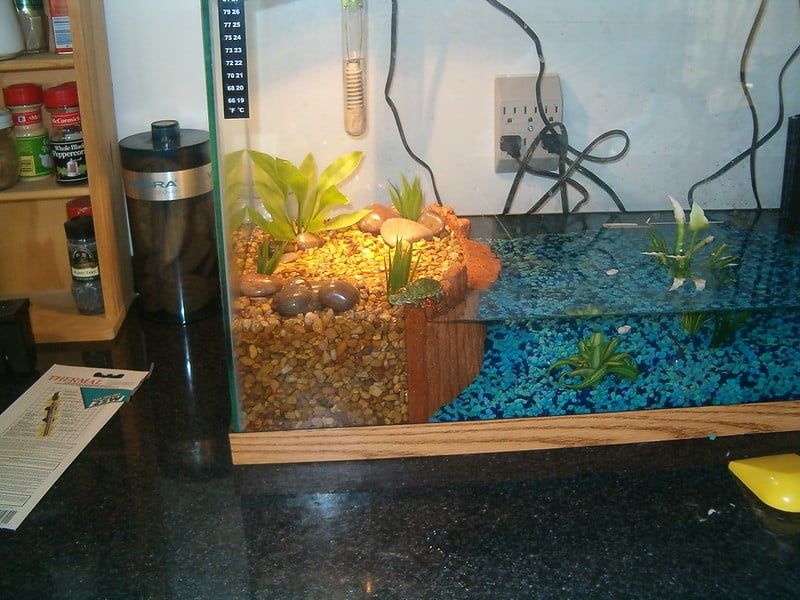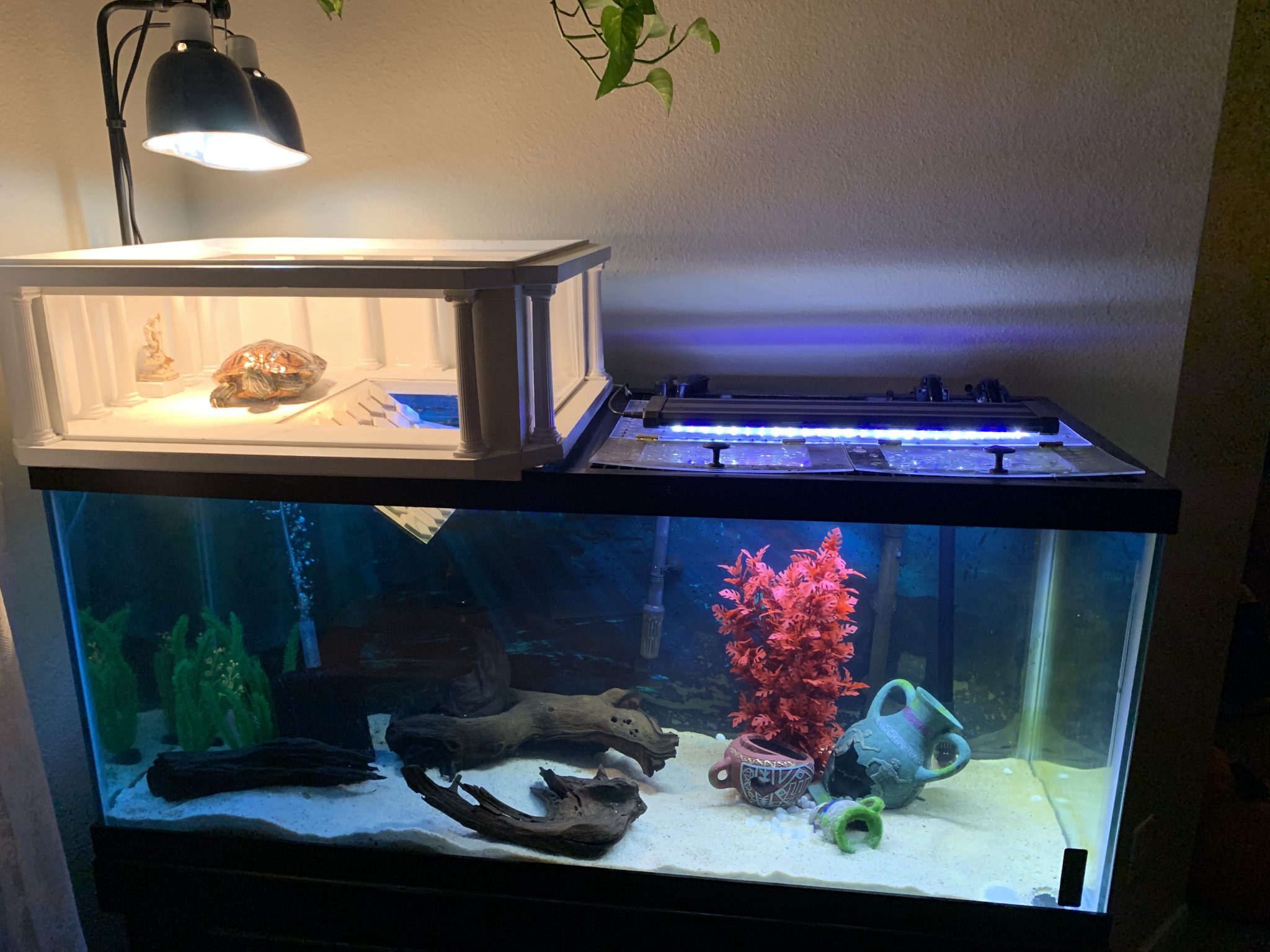
Keeping a turtle as a pet can be a rewarding experience, and providing them with a suitable tank is crucial for their health and happiness. Whether you are a beginner or an experienced turtle owner, it's important to create a tank environment that meets their specific needs. In this article, we will explore various turtle tank ideas that can help you create a comfortable and stimulating habitat for your shelled friend.
1. Tank Size and Shape

The first step in setting up a turtle tank is choosing the right size and shape. Turtles require ample space to swim and explore, so a larger tank is always better. For smaller turtles, a tank with a capacity of at least 20 gallons is recommended, while larger species may need tanks ranging from 50 to 100 gallons or more. It's also important to consider the shape of the tank ??? rectangular tanks provide more swimming space compared to circular ones.
2. Filtration System

A filtration system is vital for maintaining clean water in the turtle tank. Turtles are messy creatures, and their tanks can quickly become dirty without proper filtration. A good filtration system should include a combination of mechanical, biological, and chemical filtration to remove debris, neutralize harmful substances, and promote a healthy environment for your turtle.
3. Temperature Control

Turtles are ectothermic creatures, meaning they rely on external sources of heat to regulate their body temperature. To create a comfortable environment for your turtle, it's essential to maintain the right temperature in their tank. Using a submersible aquarium heater and a thermometer, you can ensure that the water temperature stays within the recommended range for your turtle species.
4. Basking Area

Turtles need a dedicated basking area where they can dry off and regulate their body temperature. This area should be easily accessible and provide a comfortable spot for your turtle to rest and bask under a heat lamp or UVB light. You can create a basking platform using rocks, driftwood, or commercial turtle docks available in pet stores.
5. Substrate Choices

Choosing the right substrate is important for your turtle's well-being. Avoid using gravel or small stones that your turtle might ingest, as this can lead to digestive issues. Instead, opt for large river rocks, smooth pebbles, or even bare-bottom tanks, which are easier to clean and maintain. Some turtle owners also use sand or a combination of sand and soil for certain species.
6. Aquatic Plants

Incorporating aquatic plants into your turtle tank not only enhances its visual appeal but also provides numerous benefits. Live plants help maintain water quality by absorbing nitrates and providing oxygen. Additionally, they create hiding spots for your turtle and encourage natural behaviors. Some suitable aquatic plants for turtle tanks include Anacharis, Java Fern, and Water Hyacinth.
7. Hiding Spots

Turtles appreciate having hiding spots in their tank to retreat to when they feel stressed or want privacy. You can create hiding spots using caves, PVC pipes, or hollow logs. These shelters should be large enough for your turtle to comfortably fit inside and should be placed in different areas of the tank to offer variety and mimic their natural habitat.
8. Lighting Requirements

Turtles require both heat and UVB lighting to stay healthy. UVB light is crucial for their calcium metabolism, which is essential for shell and bone health. You can provide UVB lighting using specialized reptile bulbs or fluorescent tubes designed for reptile habitats. Additionally, a heat lamp should be used to create a basking spot and maintain the required temperature gradient in the tank.
9. Tank Decorations

Adding decorations to your turtle tank not only makes it visually appealing but also stimulates your turtle's natural behaviors. You can incorporate driftwood, rocks, artificial plants, and even aquarium-safe ornaments to create an engaging and enriching environment. However, ensure that all decorations are clean, free from sharp edges, and do not pose any risk of ingestion or injury to your turtle.
10. Tank Maintenance

Maintaining a clean and healthy turtle tank requires regular maintenance. This includes partial water changes, cleaning the filter, and removing any debris or uneaten food from the tank. A consistent tank maintenance routine will help prevent water quality issues, minimize the risk of diseases, and ensure your turtle's overall well-being.
Conclusion
Creating an ideal turtle tank involves careful consideration of various factors such as tank size, filtration, temperature control, basking areas, substrate choices, and more. By providing a well-designed tank environment, you can ensure that your turtle thrives and enjoys a happy and fulfilling life. Remember to always research the specific requirements of your turtle species and consult with experts or experienced turtle owners for additional guidance.